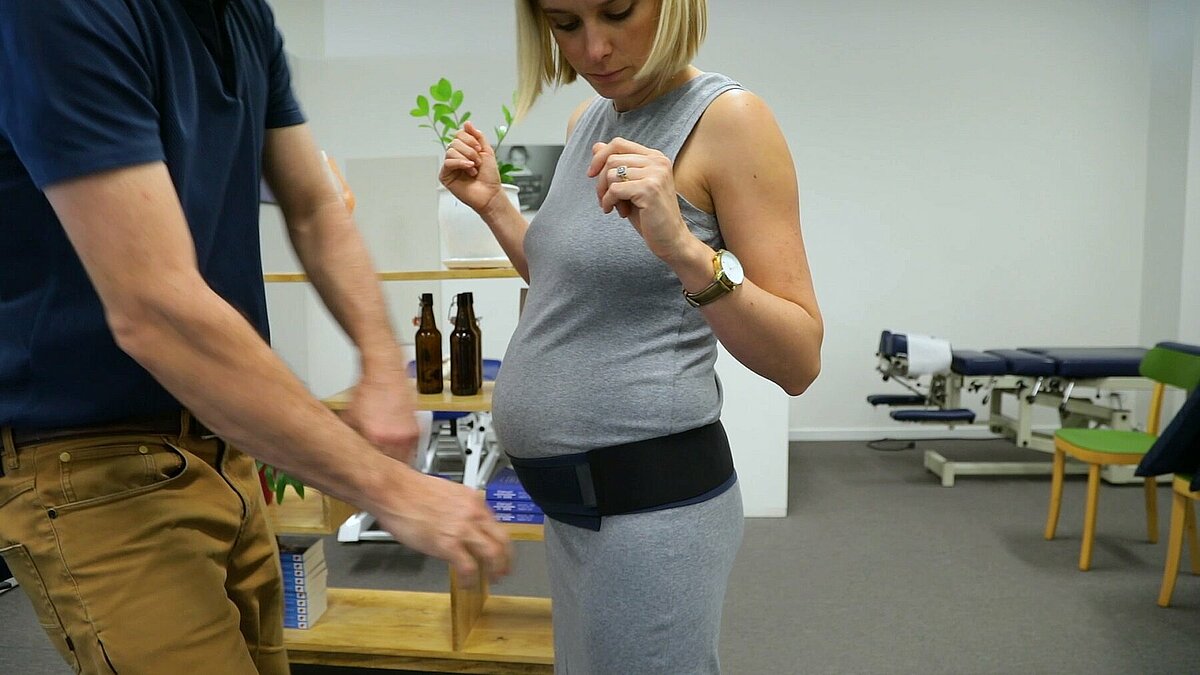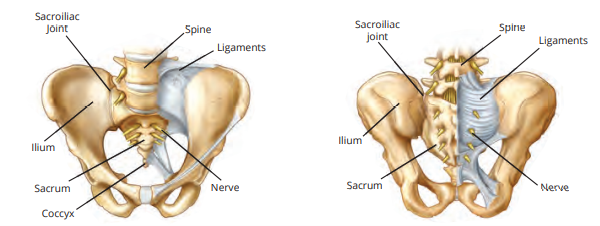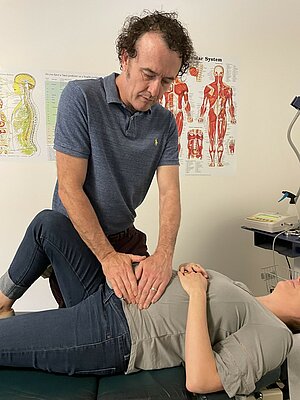A comfortable pregnancy can be largely achieved by maintaining balance in the pelvic joints, as well as good control of the abdominal ‘core’ and pelvic floor muscles.
During pregnancy, the ligaments around the pelvis can stretch and become relaxed due to hormonal changes and the extra weight of the baby. While this change to the ligaments is important to allow the pelvis to open for delivery, imbalances in the pelvic joints can occur.
DOWNLOAD YOUR $49 VOUCHER HERE
(scroll to the bottom of this page for more details).

Lax ligaments can cause the muscles around the pelvis to tighten to help stabilise the pelvic joints, with the effect of creating muscle and joint problems in other areas. Pelvic misalignment or joint dysfunction can lead to both weak and tight core muscles, back pain, and when pelvic floor muscles are damaged or stressed over time, health issues like incontinence and vaginal prolapses may become a problem (1), creating a significant cause of stress for these women.
For a woman in labour, control of the pelvic floor muscles is incredibly important (both contracting and relaxing) for allowing the baby to move through the birth canal.
When the baby crowns, a woman may tire more quickly if she has difficulty relaxing these muscles as the baby moves through the pelvis. This situation may result in more interventions to assist the birthing process (2).
Some women continue to have low back pain problems after birth (3). We find that these women may have difficulty doing exercise, or struggle to resolve back and pelvic pain with just exercise.
If you are constantly stretching, ‘rolling out’ muscles and doing core exercises without any relief from back, hip, pelvic, knee and ankle issues, perhaps you are overlooking the foundational role of the pelvis and its need for realignment following the birth of your baby.

The Good News
It can be a comfort to know that pelvic misalignment or instability can often be addressed with chiropractic care.
Chiropractic has been shown to help low back pain associated with pregnancy, while also helping to stabilise core muscles (4, 5).
A recent study demonstrated that chiropractic treatment may help improve the tone of pelvic floor muscles of pregnant women (6).

Can Chiropractic Help?
Our chiropractors aim to help you achieve a comfortable and complication-free pregnancy and delivery, and support your recovery following the birth of your baby. This can be assisted by stabilising the pelvis with a number of chiropractic techniques and specific exercises.
Dr Alan is qualified in Webster Technique, a specific pregnancy technique which aims to relieve the musculoskeletal causes of intrauterine constraint that can restrict the movement of the baby in the uterus.
We use pregnancy pillows to make you more comfortable during treatment, particularly in the later stages of pregnancy, and sell pelvic belts which can help to stabilise the sacroiliac (SI) joints during everyday activities.
For more information on pregnancy-related symptoms and how chiropractic care can help, read more here.
Please call our team on 07-3356 9552 if you have any questions on this topic.
DOWNLOAD a $49 VOUCHER which includes:
- Thorough Initial Consultation & Report of Findings (first two visits, normally $165) at our Stafford or Windsor location.
- Full Postural Assessment
- X-rays if clinically indicated (covered by Medicare)
- Chiropractic Treatments (T&Cs apply)
- Specific Exercise & Ergonomic Advice
CLICK HERE for your $49 VOUCHER – Learn More
References:
(1) Pelvic floor functional changes with spinal manipulation in pregnant and non-pregnant women: A pilot study. JMPT 2016.
(2) http://www.babycenter.com.au/a536339/your-pelvic-floor-in-pregnancy
(3) Hansen, J., The Clinical Influence of Dysfunction of the Sacroiliac Joint and the Articulation in Peripartum Women. Low Back Pain and Its Relation to the Sacroiliac Joint, 1992.
(4) Murphy et.al Manipulative Physiol Ther 2009;32:616-24
(5) Bronfort et al. Chiropractic & Osteopathy 2010, 18:3 http://www.chiroandosteo.com/content/18/1/3
(6) Pelvic floor functional changes with spinal manipulation in pregnant and nonpregnant women: A pilot study. JMPT 2016.
DISCLAIMER: All content is created and published online for informational purposes only. It is not intended to be a substitute for professional medical advice and should not be relied on as health or personal advice. Always seek the guidance of your doctor or other qualified health professional with any questions you may have regarding your health or a medical condition.